Having a chicken coop can be exciting – having the chickens in your backyard with fresh eggs in your grasp daily. For the best eggs, you want to keep your chickens healthy and antibiotic-free. Chickens can have numerous health problems throughout their life, and antibiotics are typically used to help with disease prevention. There are alternatives though, and raising chickens without antibiotics is not as challenging for smaller farms than it is for larger farms.
How to Raise Chickens Without Antibiotics:
- Keep the chicken coop clean daily
- Keep the correct amount of space available in the chicken run and coop
- Feed the chicken antibiotic-free feed
- Conduct regular maintenance on the coop
- Use probiotics and prebiotics
- Purchase organic chicks
Raising chickens is complex – there is a lot that goes into a chicken farm, including feed, proper spacing, lighting, minerals, water, and disease prevention.
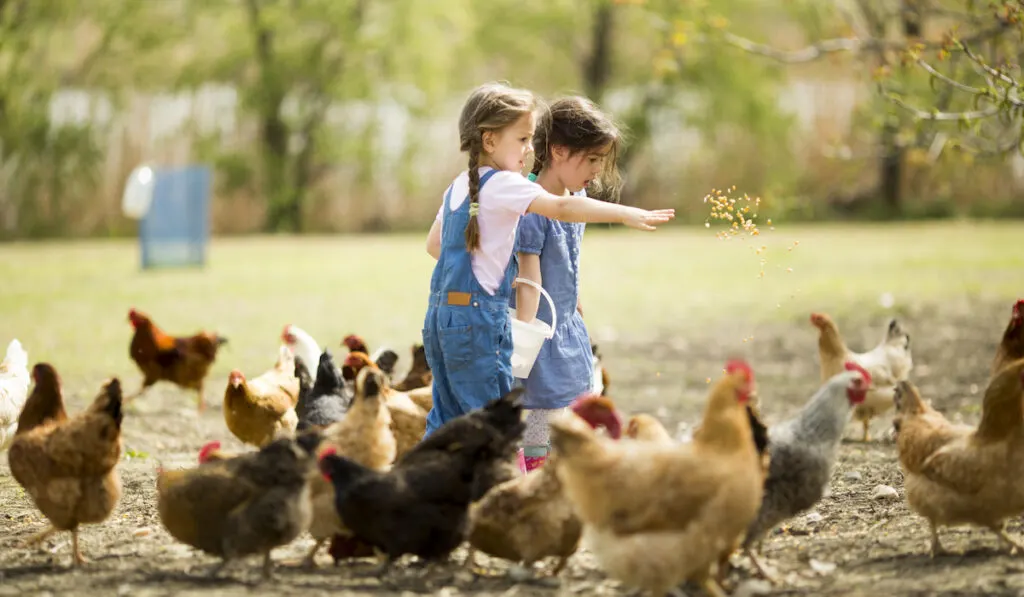
Having a good solid plan in place to care for sick chicks is helpful, but you should always work with a veterinarian. If you want to raise your chicks without antibiotics, there are a few things that you may need to know first.
Table of Contents
Raising Chickens Without Antibiotics
Raising chickens without antibiotics is easier than it sounds. Farms use antibiotics are used for several different purposes but mainly to prevent disease in a herd or flock. Antibiotics are now regulated by the FDA and are required to be administered by a licensed veterinarian.
Large companies add antibiotics to poultry feed in order to prevent widespread disease. With a backyard farm, the choice not to use antibiotics is simple. You only have a handful of chickens to tend and a few things can keep disease out of your coop.
- If you think you might have a sick chicken, make sure that you keep it away from the rest of the flock until it has recovered.
- Purchase antibiotic-free feed to keep antibiotics out of your coop.
- Keeping a clean coop to prevent rodents and outside animals from bringing in disease.
- Avoid overcrowding as that too can increase disease on poultry farms.
What Antibiotics Are Used For
Antibiotics in chickens are used to treat disease. Chickens have dome different types of bacteria than humans do, and therefore they are treated with different antibiotics. For example, Penicillin is used very rarely in chickens as it is virtually ineffective.
The more commonly used antibiotic in poultry is tetracycline, mixed with other FDA approved drugs; this helps prevent Cocciodial disease in upcoming chicks. This mixture is usually added to the starter feed to help get the chicks off to a good start.
This same mixture can also be used in a diet for hens that are laying eggs. Keeping hens free of disease ensures they can get the nutrients they need for laying eggs and not fighting disease. The idea is to prevent early onset of disease so the chickens are able to lay healthy eggs.
Hatchlings that receive an injection during their formation stage are treated with an antibiotic at the injection site to prevent any disease from infecting the unborn chick. This practice is common in hatcheries that do not use a natural hatching process.
If you decide to go antibiotic-free, you will need to take extra steps to help keep your flock healthy.
Feed Types
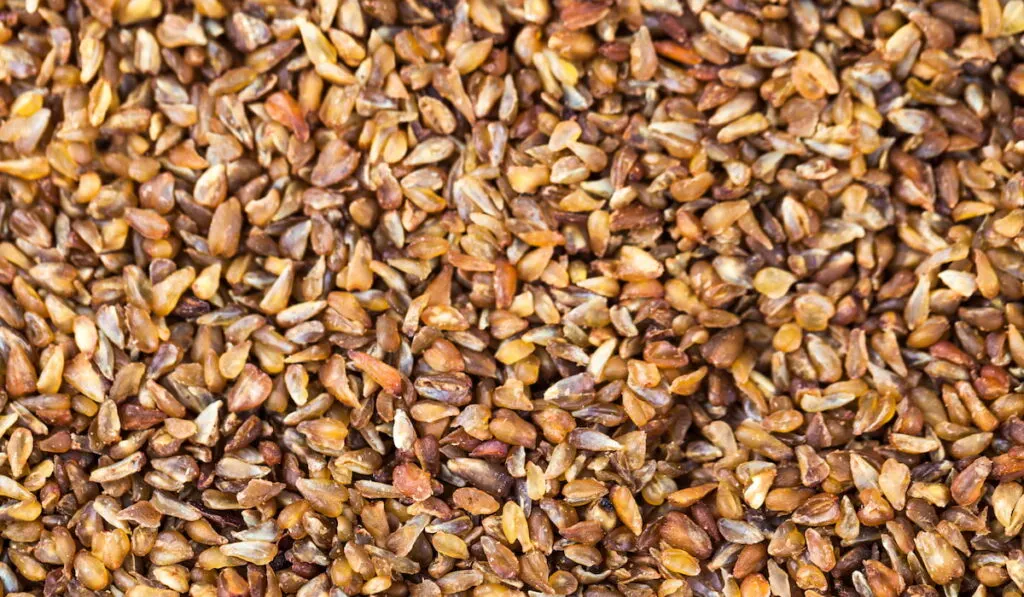
You can get medicated chick feed from your local feed store without antibiotics in the formula. You want to look for a formula that contains amprolium. Amprolium is a type of organic substance that limits the food needed for the coccidiosis to multiply by blocking the B1 vitamin from the virus.
Medicated chick feed is only a preventative measure and should only be used as such. The amount of medication in the feed is only enough to prevent the disease from developing. If you do have sick chicks, you will need to consult a veterinarian.
You can also get non-medicated feed has no added medication to prevent disease in it; this is also a good choice if trying to raise your chickens 100% all-natural. You can also use non-medicated starter feed if your chicks have already been vaccinated for coccidiosis.
Hormones in Poultry
In the United States, there are no chickens that are given hormones for growth. This practice has been banned since the 1950s. There is no difference between chickens labeled hormone-free and not labeled hormone-free.
The confusion comes from the fact that this practice is still in use for cattle production. Hormones exist in only two forms, steroids or proteins. Protein hormones are broken down in the digestive tract, while steroidal hormones are not.
Steroidal injections would not be cost-effective, as chickens would need several daily injections. The only way to get a growth hormone into the chicken would be to feed it to them. Since proteins are broken down in the digestive tract, this method would be ineffective also.
Birds are getting bigger because poultry scientists are good at their jobs. Mastering the nutritional needs of chickens, combined with creating the perfect environment for growth, has lead to great strides in growth gains.
Labeling Laws
Labeling laws for food products in the USDA are fairly relaxed. They only require the basic ingredients to be mentioned.
The USDA only requires 8 items:
- Product Name
- Handling statement
- Net Weight
- Ingredients
- Address line
- Nutrition Facts
- Safe handling instructions
- Est. Number
The labeling requirements for antibiotics are practically non-existent for poultry or any livestock product. Most labels do not require extensive verification, with the exception of the Organic label.
The Organic label is the only label that requires an inspection from the USDA and random inspections to ensure compliance with USDA Organic laws.
Farm-Raised Label
Any company can use the term farm-raised as it has no specific meaning. By definition, all chickens are raised on farms. Some companies choose this label as a means of marketing their products to customers.
Usually, local farm-raised chickens receive this label in restaurants that source their chicken from local vendors compared to national slaughterhouses.
This can also mean several different things as well. The company supplying the chicken can claim that it is farm-raised, the owner could be purchasing from a local farm, or own the farm themselves that provides the food to the restaurant.
When you see the farm-raised label on products in-store, it mostly refers to how the chicken was raised with no specifics. This label does not define any specific uses of hormones or antibiotics within the chicken.
Farm-raised poultry does not mean that the poultry was organic. Organic chicken usually is raised outdoors and fed organic grains. Some farms label their poultry as farm-raised as an alternative means to certifying for organic labeling from the USDA.
Free Range
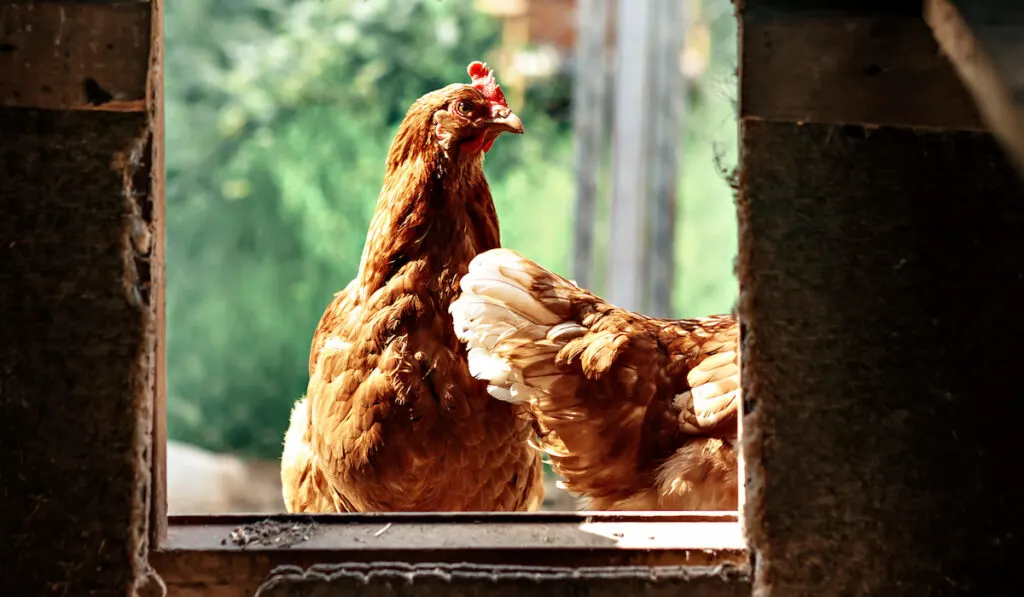
There is no common meaning behind the term “free-range.” As long as the chickens have access to the outdoors, they are considered free-range. The National Chicken Council states that only 1% of chickens nationwide are actually roaming free.
True free-range means that there are no boundaries confining the animal. What is more common is “yarding,” which is where the livestock are kept inside a perimeter, such as a fence. The need to treat these types of chickens for a disease is also rare as they typically have more space.
Free-range chickens get more sunlight, bugs, seeds, and other things that they are naturally supposed to have. The chicks are not debeaked so that they can hunt for bugs, and fend for themselves.
Due to the fact that the only requirement for the label “free-range” is that chickens have access to the outdoors, consumers are looking for other labels that define what they are looking for.
If you were looking to raise true free-range chickens, then you would need some type of pasture or open space for them to roam.
Non-GMO
Genetically Modified Organisms or “GMOs” have several different meanings. GMOs in reference to raising chickens most often refers to the feed that the chickens consumed during the growth stage. Chicken feed usually consists of corn, alfalfa, soybeans, canola bean, and other grains.
The term GMO on chicken feed means that the seeds were modified genetically to change the way that the plant absorbs nutrients for growth. The term has a negative connotation for some consumers due to marketing campaigns highlighting potential environmental and health risks.
There is no evidence to support the idea that non-GMO fed chickens are nutritionally different in any way from chickens fed with GMO feed. Chickens themselves are not genetically modified, only the feed. Genetically modified food has allowed for higher yields, fewer pesticides, and provides natural resistance to insects from the plants.
There is also no evidence to support that GMO feed decreases health in poultry either, in fact, the evidence shows quite the opposite, overall chicken health has improved since 1996 with GMO feed.
Antibiotic Residue
All poultry must go through a separate phase which allows all antibiotics and hormones to pass through their system prior to slaughter. Every processing plant also has a USDA representative to test the poultry in batches for any antibiotic residue.
Antibiotic residue in meat is a real health concern for humans. It can stunt growth and cause other long term health issues in humans. About 25.3% of chickens tested have any antibiotic residue in them.
The withdrawal period can vary depending on the type of antibiotic residue expected in the chicken or the eggs. With a live chicken, the withdrawal period is usually seven days and 25 days with eggs.
If you are administering antibiotics to your home-raised chickens, the general rule of thumb is to allow a withdrawal period of 2 weeks.
“Raised Without Antibiotics” Vs. “No Antibiotics Ever”
The labeling requirements are lightly enforced with the terms “raised without antibiotics” and “no antibiotics ever.” Poultry with this label will not have ever been fed antibiotics or treated with antibiotics if they were sick. However, this label does not apply to eggs, and many chickens, when they get sick, are treated with antibiotics and this makes them ineligible for these labels.
Antibiotic Resistance
Antibiotic resistance is not just a concern with livestock, but also a concern with humans. If there is a lot of antibiotic residue in the meat, as humans consume the meat, it contributes to antibiotic resistance.
The stronger the resistance to antibiotics, the fewer antibiotics work in the livestock and humans. This can lead to what we know as “superbugs” being passed around with ineffective or no cures. Most human antibiotics are not generally used in poultry unless absolutely necessary to treat sick birds.
Antibiotics are not a “one size fits all” treatment. Antibiotics are used to treat bacteria with specific characteristics, so using antibiotics for humans in poultry to treat an illness isn’t usually effective.
Probiotics Vs. Antibiotics
Probiotics are healthy for chickens on home ranches and in commercial production. Probiotics provide essential bacteria needed for chickens to have optimal health in the digestive tract. Probiotics are often found in natural things that contain bacterial cultures.
The live cultures in apple cider vinegar are said to work really well with backyard chickens – just add a teaspoon or so in their water source. Probiotics also help with common diseases such as salmonella and significantly cut down on the risk of infection.
Probiotics also help hens lay good healthy eggs and reduce insects around the chicken coop. Fewer flying insects around the chicken coop means the less disease or need for antibiotics you have.
Prebiotics are food for probiotics to eat. Some popular prebiotics to help aid your chicken’s healthy lifestyle are bananas, garlic, honey, berries, and yams. Try mixing these things in with their feed for healthy chickens!
Sick Chickens
Chickens are going to get sick, and you have to deal with a sick chicken in one way or another. Taking your chicken to the vet is probably the best method, but there are some home remedies that you can use to hold you over for a vet visit or to prevent the use of antibiotics in your chickens.
Oregano oil or dried oregano herb is a natural antibiotic that chickens can eat. You can add some oregano to their feed a few times per week to help prevent disease. Giving your chickens some electrolytes also helps prevent dehydration in a sick chicken.
The sick bird should be separated from the flock until you can determine what the cause is, and what the proper treatment should be. Removing any stressors for the chicken will help with her recovery, and quarantine is necessary to reduce spreading the disease to other birds.
Making sure your birds have adequate space, and are introduced to new chicks properly, are some good tips to ensure that you don’t have too many sick chickens. You want to make sure that you are feeding them good feed, and de-worming them as needed.
Antibiotic Alternatives
You can try a few things to prevent disease in chickens, but there is not really any substitute for the effectiveness of antibiotics. Some plants have antibiotic properties and can be used in place of a chemical treatment depending on the severity of the issue.
Honey
A honey bath can help reduce swelling in certain areas of the chicken and provide relief for swollen glands. Just apply the honey on the swollen glands, wait an hour, and wash it off.
Molasses
A molasses solution is helpful if your chicken has eaten a toxic plant – mix ¼ cup of molasses and 2 liters of warm water in the proper measurements and give to the chickens for about 5 hours.
Apple Cider Vinegar
Apple cider vinegar can be used to kill pathogens by lowering the natural Ph level in the chicken’s intestinal tract. You mix this home remedy the same as the molasses. Under no circumstances should you give a chicken pure apple cider vinegar as it is too acidic for them, and it will burn their tissues.
Taking preventative measures is an alternative to using antibiotics on your livestock. Preventative measures we’ve discussed include giving them pro-biotics, letting them have enough space to roam, feeding them a proper diet, etc.
Living Conditions
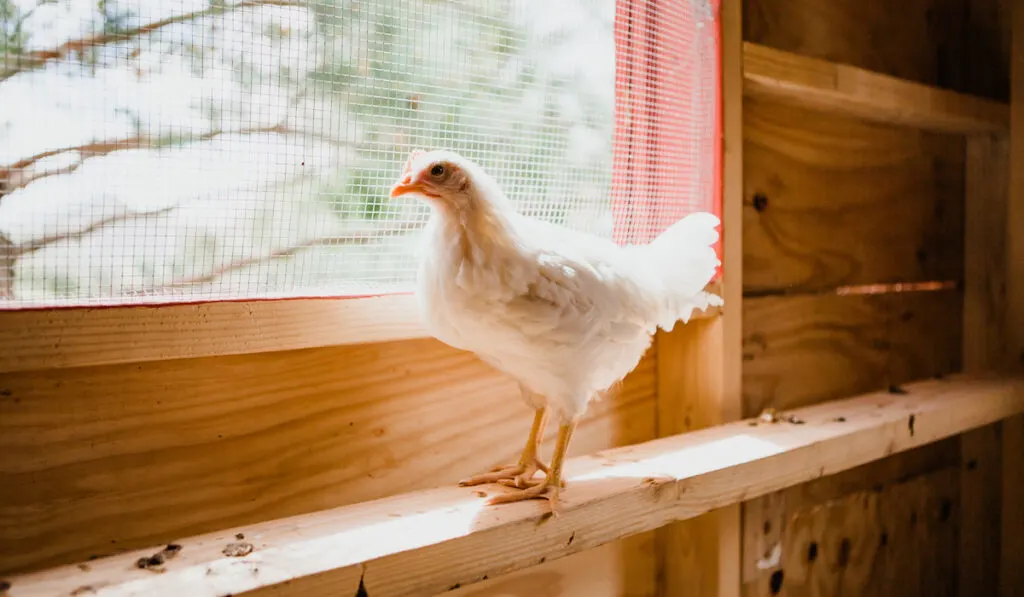
Keeping the living conditions ideal for your poultry is key to keeping a healthy stock.
Overcrowding
The more crowded the livestock is, the more issues they tend to have.
Having free roaming chickens lessens the need to declaw and debeak baby chicks, as cannibalistic incidents are far and few between. With enough room, they don’t have to compete for food, water and space to forage and roost.
On average, for inside the coop, you need 2-3 square feet per hen. The outside run needs about 8-10 square feet per hen to be a healthy environment. If a healthy living space is provided then the need for antibiotics can drop significantly.
Overcrowding is a large problem in the raising of poultry and often leads to health problems for chickens, which, in turn, means that you need to use more antibiotics. Overcrowding can be prevented with backyard setups, simply by not taking on more chickens than you need.
Some of the things that overcrowding causes are:
- Cannibalism
- Disease
- Parasites
- Lack of proper nutrients
- Dehydration
- Fighting
- Lack of fertility (no eggs)
- Overlooked or missed injuries or illness
The most common issue is cannibalism, which is prevented by removing the beak at an early age. Having chickens raised in a free-roaming setting can eliminate the majority of these problems.
Overcrowding isn’t just about the animals’ health, either.
High amounts of ammonia are found in overcrowded chicken coops, as poor ventilation is often the culprit behind the lack of filtered air. Overcrowded, dirty coops harbor diseases that are harmful to humans too.
Keeping the Coop
Raising chickens without antibiotics requires some good quality care for their living space. You need to have the proper space for the coop and the run in order to keep happy chickens. A few good tips here will help you keep the chickens happy and the predators out.
Bury your mesh guard around the chicken coop about 3 feet deep. This will help keep predators out and chickens in the coop. Chickens need constant access to water and food. They also need about 12-14 hours of sunlight per day, so let your chickens have plenty of time outside.
If you are using the free-range method, build your chickens some hiding spaces so they can feel safe and rest. Hang used CDs from the trees to scare off predators.
Clean the coop regularly. The last thing you need is a rat infestation because of unkept coops. Having scraps laying around for the birds is also scraps laying around for the rats. Try to keep the chicken’s mess contained in a specific area that you can clean easily.
Buying Organic Chicks
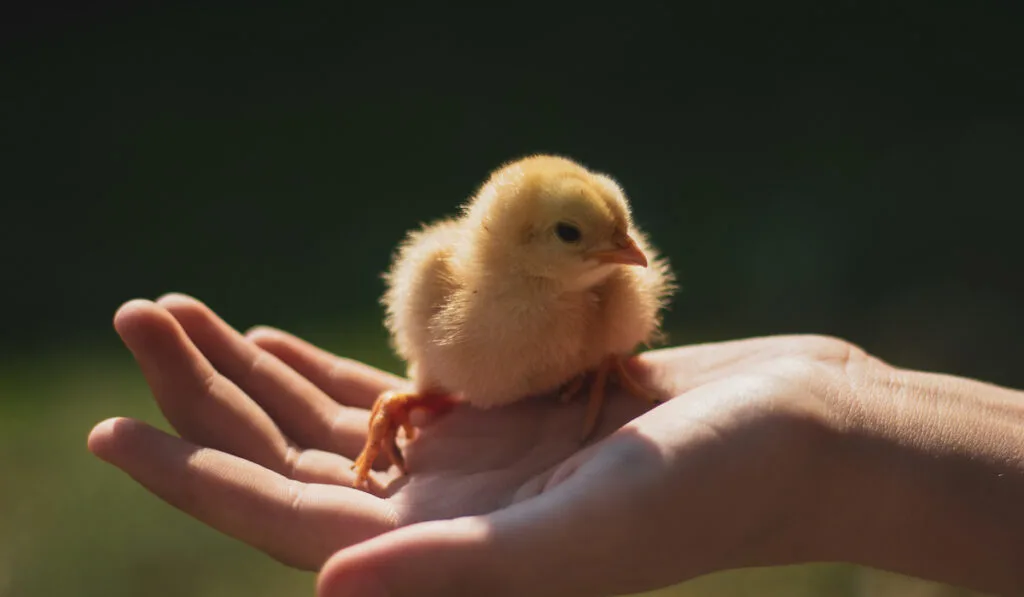
Buying Organic chicks is more of a concept than anything else – no chicken is organic; it comes down to the food that they were fed. Some farms offer organically certified eggs to hatcheries. If you have an egg incubator or a home hatchery, then buying a certified organic branded egg may be best.
Organic eggs must come from cage-free environments and from chickens that were fed organic meals. Only natural processes can be induced, such as molting. Since molting must occur naturally, and the food must be natural, the egg can then be classified as organic.
If you are buying your chicks, they must be feed organic meals from the second day of their life in order to qualify as an organic chicken. Organic hens can also not be fed any GMO feeds. The organic feed must be certified organic chicken feed.
Certified organic producers are monitored for a minimum period of three years prior to being able to claim certified organic. This also means that there are no animal by-products or cross-contamination from GMO seedlings leftover. Antibiotics may not be feed to organic chickens unless there is an outbreak that requires antibiotic treatment.
Campylobacter
Campylobacter is the bacteria most commonly associated with handling raw chicken or eating undercooked chicken. The resistance that humans have to the treatments for this bacteria have beem caused by the antibiotics used in poultry production. Erythromycin is usually used to treat this in humans; however, the same types of antibiotics are used as preventative measures on poultry farms.
While the chance of getting E-coli may be slim, the foodborne pathogen C-Coli is more likely to be contracted. This resistance to treatment can affect people with weaker immune systems, as their bodies also cannot produce enough antibodies to help fight the bacteria.
Since these strains are becoming resistant to the same drugs used to treat them in humans, it makes fighting the C-Coli strains more difficult. The drug Batyril was commonly used to treat C-Coli on farms but has not been approved by the FDA for use.
Information Gap
The antibiotic discussion is probably going to go on forever. Antibiotics have an important role in caring for any livestock, and the jury is still out on whether or how the antibiotics fed to chickens harm people. In larger farmhouses, using antibiotics more often than not is a sure sign that things are not going very well for the chickens.
If you are going to raise a few chickens or a few hundred chickens on a farm, not using antibiotics as a general practice is more a choice than a necessity, unless you have a sick chicken in desperate need of treatment.
Large companies routinely using antibiotics in starter feed to help prevent some common diseases in the living quarters – with fewer chickens and more space this might nor be a necessity for you.
If your chicken coop is properly set up, and you have a good amount of space for your chickens to run around, plenty of water, and keep your coop clean, your chickens should do just fine without the need for consistent antibiotics.
